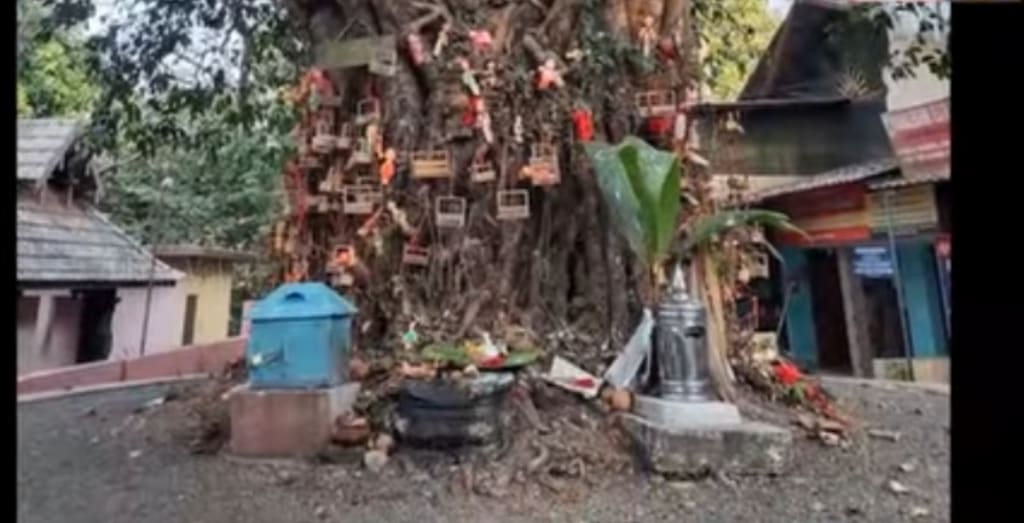Chottanikarai pagavathi Amman
The architectural phenomenon of Chottanikkara Temple reflects traditional Kerala style with intricate wood busts, beautiful oils, and stunning puppets adorning its demesne. The main deity, Goddess Bhagavathy, is elevated in three forms- Saraswati in the morning, Lakshmi at noon, and Durga in the evening- emblematizing the three different rates or Gunas. Addicts mass to the tabernacle to seek the blessings of the Goddess for colorful purposes,

Chottanikkara Bhagavathy Temple, also known as Chottanikkara Devi Temple, is a famed Hindu tabernacle devoted to Goddess Bhagavathy, an manifestation of Goddess Durga. Located in Chottanikkara, a exurb of Kochi in the state of Kerala, India, this tabernacle holds immense significance in Hindu tradition and is deified by addicts from each over the world.
The history of Chottanikkara Temple dates back centuries, steeped in legend and myth. According to popular belief, the tabernacle is positioned on the spot where the Goddess manifested herself to palliate the mournings of a sucker named Kannappan. Legend has it that Kannappan, a loyal sucker of the Goddess, was formerly held by evil spirits. Despite his afflictions, he continued to worship the Goddess with unwavering faith. Pleased by his devotion, the Goddess appeared before him at Chottanikkara and cured him of his affections, therefore earning the tabernacle its name and fame.
The architectural phenomenon of Chottanikkara Temple reflects traditional Kerala style with intricate wood busts, beautiful oils, and stunning puppets adorning its demesne. The main deity, Goddess Bhagavathy, is elevated in three forms- Saraswati in the morning, Lakshmi at noon, and Durga in the evening- emblematizing the three different rates or Gunas. Addicts mass to the tabernacle to seek the blessings of the Goddess for colorful purposes,
including mending from physical and internal ails, protection from evil spirits, and fulfillment of solicitations. One of the most striking features of Chottanikkara Temple is the ritual of ‘ Neyyabhishekam, ’ where addicts offer ghee( clarified adulation) to the Goddess as a form of deification. It's believed that this ritual has the power to cure colorful affections and bring substance to the addicts. Another notable tradition is the ‘ Guruthi Pooja, ’ performed during the evening hours to shield off evil spirits and negative powers.
This ritual involves offering a creation of turmeric greasepaint, lime, and water to the Goddess, emblematizing the triumph of good over wrong. piecemeal from its religious significance, Chottanikkara Temple also holds artistic and literal significance. The tabernacle complex houses several lower sanctuaries devoted to colorful divinities, including Lord Shiva, Lord Ganesh, and Lord Ayyappa, reflecting the spirit of inclusivity and diversity in Hinduism.
The periodic jubilee of the tabernacle, known as ‘ Makam Thozhal, ’ attracts thousands of addicts who gather to substantiation various processions, traditional music, and artistic performances, adding sprightliness to the spiritual air. The geographical position of Chottanikkara Temple adds to its appeal, nestled amidst lush verdure and serene surroundings. positioned on the banks of the Periyar River, the tabernacle offers a tranquil retreat for addicts seeking solace and spiritual revivification.
The graphic geography girding the tabernacle enhances the spiritual experience, making it a popular destination for pilgrims and excursionists likewise. Over the times, Chottanikkara Temple has evolved into a symbol of faith, stopgap, and devotion for millions of addicts across the globe. Its dateless appeal and sacred air continue to inspire generations, transcending walls of estate, creed, and religion. Whether seeking godly blessings or simply marveling at its architectural splendor, callers to Chottanikkara Temple are bound to be enchanted by its mystical charm and spiritual vehemence.
In conclusion, Chottanikkara Bhagavathy Temple stands as a lamp of devotion and church, steeped in rich history and artistic heritage. From its fabulous origins to its architectural nobility, from its sacred rituals to its serene surroundings, every aspect of this tabernacle reflects the enduring heritage of Hinduism and the dateless devotion of its followers. As a symbol of godly grace and benevolence, Chottanikkara Temple continues to inspire millions, serving as a testament to the eternal bond between the mortal soul and the godly.
About the Creator
Enjoyed the story? Support the Creator.
Subscribe for free to receive all their stories in your feed. You could also pledge your support or give them a one-off tip, letting them know you appreciate their work.





Comments
There are no comments for this story
Be the first to respond and start the conversation.